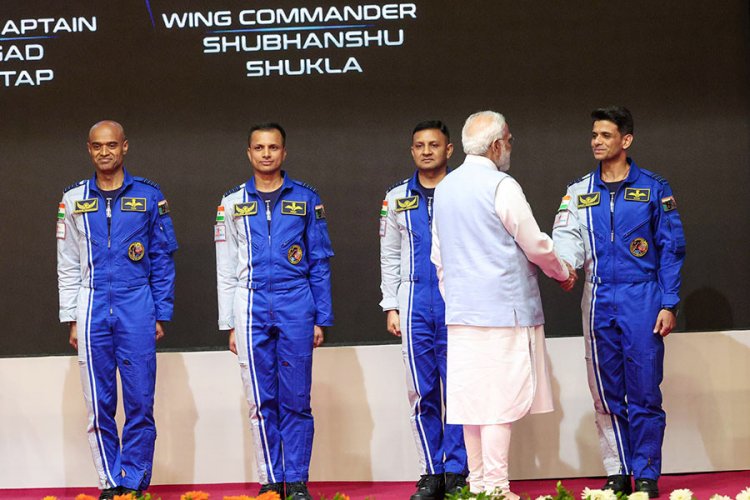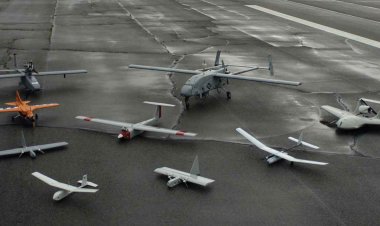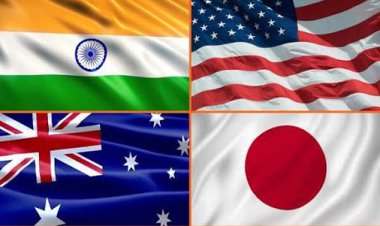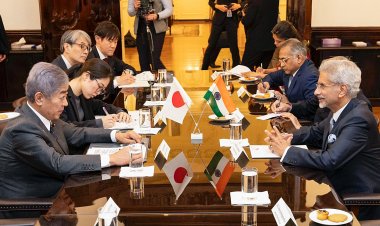Strategic Significance of Gaganyaan in Indian Space Diplomacy
The article delves into the intricacies of the Gaganyaan Mission, a human space flight program, and its potential implications for India's national interests. The article explores the challenges and opportunities associated with the mission, including its impact on India's global standing, the development of indigenous space technologies, and the potential benefits to the Indian economy.

Explainer
By Arundhati Singh Tiwari
Foraying into the space very early on, the space program of India has emerged as a key instrument of its science diplomacy and soft power projection in recent decades. It was earlier driven towards enabling socio-economic development in India; however, the goals of the space program have widened. The upcoming Gaganyaan mission is a significant milestone for India as it plans to send its astronauts into space. This mission will solidify India's status as a global space power and increase its strategic influence worldwide. The Gaganyaan mission carries with it significant implications for India's national interests in the areas of science, economics, and geopolitics.
Since its inception in the 1960s, the Indian Space Research Organisation (ISRO) has always had ambitious agenda in pursuing indigenous space research and exploration. Over the decades, India has developed robust satellite, launch vehicle, and space applications capabilities. However, the country has yet to accomplish a human spaceflight mission. The Gaganyaan program aims to change that by sending Indian astronauts into low earth orbit by 2024, making India the fourth nation to develop an independent human spaceflight capability after Russia, the United States, and China.
The Gaganyaan mission marks the pinnacle of over sixty years of ISRO's efforts to bolster India's space capabilities. However, this mission is not just a feat of technical achievement, it also holds immense strategic significance from the perspective of science diplomacy, as it elevates India's global standing. The significance of the Gaganyaan mission for Indian space diplomacy is multifaceted.
Space diplomacy has emerged as a key facet of science diplomacy, which refers to the use of scientific collaborations among nations to address common problems and promote broader diplomatic interests. The three primary pathways through which the Gaganyaan mission can facilitate Indian space diplomacy are developing technology and augmenting economic potential, promoting bilateral and multilateral cooperation, and projecting soft power.
The technologies and capabilities required for human spaceflight are highly complex, capital-intensive, and have wider applications across multiple sectors beyond just space exploration. Therefore, undertaking an autonomous human spaceflight program yields immense technological spinoffs and economic benefits for India.
Some key technological domains that Gaganyaan will bolster include launch vehicle engineering, spacecraft design, life support systems, human robotic operations, and more. These capabilities have commercial applications in fields like telecommunications, remote sensing, weather forecasting, and navigation. The program is expected to generate enormous bump in economic activity, creating thousands of job opportunities and boosting India's industrial capabilities across strategic sectors.
ISRO is collaborating with several international space agencies like NASA, JAXA, and Roscosmos for various aspects of the Gaganyaan mission. For instance, Indian astronauts are set to train with Russian cosmonauts and use Russian facilities for pre-flight simulations and preparing for life aboard the International Space Station. France is assisting with space crew medical monitoring, while the US and Europe have extended support for critical scientific experiments to be conducted during the mission.
Such international cooperation fosters stronger diplomatic ties with space powers and opens doors for further joint exploration in the future. India can potentially contribute its low-cost space access via PSLV and GSLV rockets to multinational space endeavours. Gaganyaan program's success could pave the way for more ambitious Indo-international collaboration like sending Indian astronauts to lunar orbit or the International Moon Village proposed by Russia.
Apart from its core mission objectives, the Gaganyaan project holds tremendous symbolic significance as a high-level national achievement. By undertaking a human spaceflight mission, India is now part of an elite group of only four nations that possess operational human spaceflight capabilities, immediately enhancing its global standing. This project showcases India's indigenous technological prowess and the scientific expertise of its institutions such as ISRO on the world stage.
The 2014 successful Mars Orbiter Mission was widely celebrated due to its importance in contributing to India's arrival among the interplanetary elite, despite being a relatively low-cost robotic probe. However, sending Indians into space aboard an Indian spacecraft carries far greater emotive resonance and public inspiration value. A nationally televised human spaceflight would evoke immense public pride, patriotism, and aspirations, burnishing India's soft power image.
National prestige projects like Gaganyaan also have strategic implications in terms of influencing domestic politics, regional dynamics, and great power signaling. It allows India to signal its credible and rising power status in South Asia while providing role model effects that could stimulate space ambitions among developing nations around the world.
While the benefits are immense, executing Gaganyaan also faces multifarious challenges- programmatic, financial, organizational, and geopolitical. From procuring specialized equipment to crew safety considerations to establishing necessary ground infrastructure, ISRO has its task cut out in delivering this complex mission by the set 2024 deadline without major hitches.
Funding poses another key hurdle, with the mission estimated to cost over $1 billion at a time when ISRO itself faces budgetary constraints. Given the scale of national prestige at stake, cost overruns seem unavoidable and the government will have to enhance ISRO's budgets commensurately. There are also concerns about ISRO's organizational capacity to juggle such an ambitious new project along with its existing commitments.
Geopolitically, while Gaganyaan represents India's arrival into the rarefied human spaceflight realm, it may also draw pointed comparisons with more advanced space powers. India's capabilities lag behind the other established spacefaring nations like the US, Russia, and China who operate large orbital stations, undertake extravehicular activities, and have plans for crewed lunar/Mars exploration. Moreover, India's annual civil space budget remains significantly less than the major spacefaring nations, which could prove as an impediment for its future ambitions. There are also rising next-generation space players like SpaceX that could outpace national space agencies through their entrepreneurial zeal and private capital.That said, Gaganyaan should be viewed as just the first step in a longer-term vision for expanding India's human spaceflight footprint.
Expanding bilateral and multilateral partnerships with other agencies will be key in realizing these grander ambitions. The Gaganyaan mission is more than just a technical achievement; it represents a strategic investment in India's space diplomacy capital for the future. This mission is a watershed moment in India's space diplomacy journey in the 21st century, allowing the country to display its indigenous technological capabilities, promote international space collaborations, and project its soft power on the global stage. Furthermore, it aims to create tangible economic value and strengthen key strategic sectors. Despite this, some remain skeptical of the opportunity costs of crewed spaceflight in comparison to other priorities. Nonetheless, if successful, Gaganyaan will mark India's official entry into the elite human spaceflight club, paving the way for even more ambitious space exploration projects in the future. As India's ambitions grow in an increasingly competitive domain of space diplomacy, commensurate with its sphere of interests, the Gaganyaan mission will play a crucial role in shaping the country's future
Disclaimer: This paper is the author's individual scholastic contribution and does not necessarily reflect the organization's viewpoint.
























